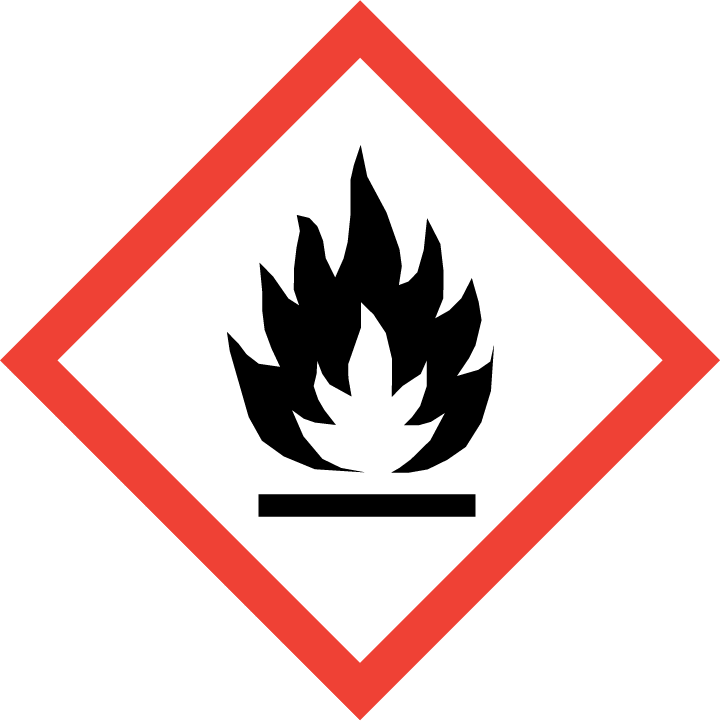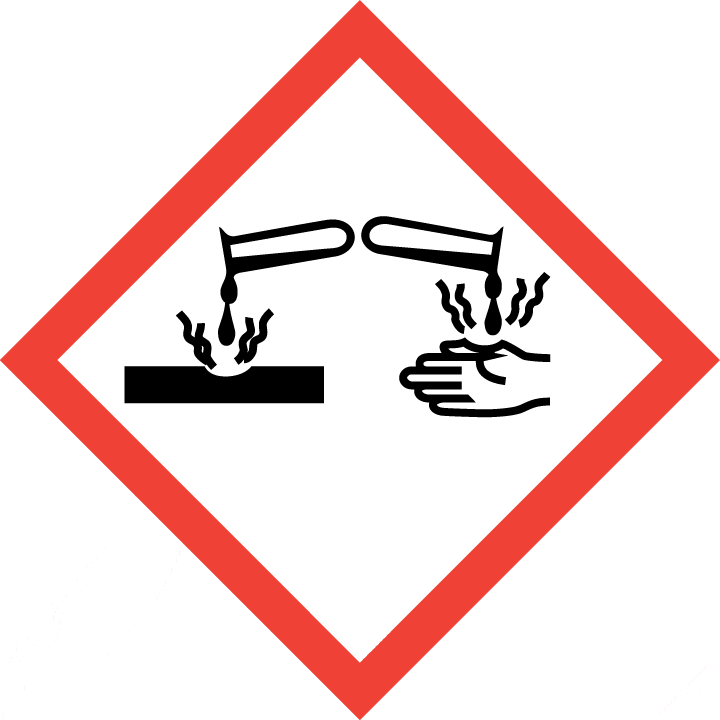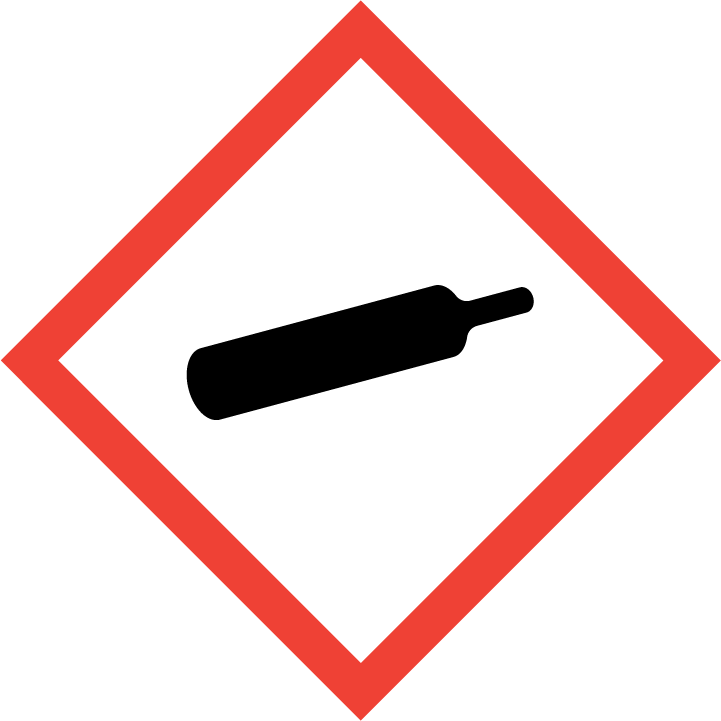| Product name | phosphane |
|---|
| Product number | - |
|---|---|
| Other names | hydrogen phosphide |
| Identified uses | For industry use only. Warfare and Terrorism Agents (used in acts of war or terror) |
|---|---|
| Uses advised against | no data available |
| Company | MOLBASE (Shanghai) Biotechnology Co., Ltd. |
|---|---|
| Address | Floor 4 & 5, Building 12, No. 1001 North Qinzhou Road, Xuhui District, Shanghai, China |
| Telephone | +86(21)64956998 |
| Fax | +86(21)54365166 |
| Emergency phone number | +86-400-6021-666 |
|---|---|
| Service hours | Monday to Friday, 9am-5pm (Standard time zone: UTC/GMT +8 hours). |
Gases under pressure: Compressed gas
Flammable gases, Category 1
Skin corrosion, Category 1B
Acute toxicity - Inhalation, Category 2
Hazardous to the aquatic environment, short-term (Acute) - Category Acute 1
2.2 GHS label elements, including precautionary statements| Pictogram(s) |      |
|---|---|
| Signal word | Danger |
| Hazard statement(s) | H220 Extremely flammable gas H314 Causes severe skin burns and eye damage H330 Fatal if inhaled H400 Very toxic to aquatic life |
| Precautionary statement(s) | |
| Prevention | P210 Keep away from heat, hot surfaces, sparks, open flames and other ignition sources. No smoking. P260 Do not breathe dust/fume/gas/mist/vapours/spray. P264 Wash ... thoroughly after handling. P280 Wear protective gloves/protective clothing/eye protection/face protection. P271 Use only outdoors or in a well-ventilated area. P284 [In case of inadequate ventilation] wear respiratory protection. P273 Avoid release to the environment. |
| Response | P377 Leaking gas fire: Do not extinguish, unless leak can be stopped safely. P381 In case of leakage, eliminate all ignition sources. P301+P330+P331 IF SWALLOWED: Rinse mouth. Do NOT induce vomiting. P303+P361+P353 IF ON SKIN (or hair): Take off immediately all contaminated clothing. Rinse skin with water [or shower]. P363 Wash contaminated clothing before reuse. P304+P340 IF INHALED: Remove person to fresh air and keep comfortable for breathing. P310 Immediately call a POISON CENTER/doctor/… P321 Specific treatment (see ... on this label). P305+P351+P338 IF IN EYES: Rinse cautiously with water for several minutes. Remove contact lenses, if present and easy to do. Continue rinsing. P320 Specific treatment is urgent (see ... on this label). P391 Collect spillage. |
| Storage | P410+P403 Protect from sunlight. Store in a well-ventilated place. P403 Store in a well-ventilated place. P405 Store locked up. P403+P233 Store in a well-ventilated place. Keep container tightly closed. |
| Disposal | P501 Dispose of contents/container to ... |
none
3.Composition/information on ingredients 3.1 Substances| Chemical name | Common names and synonyms | CAS number | EC number | Concentration |
|---|---|---|---|---|
| phosphane | phosphane | 7803-51-2 | none | 100% |
Consult a physician. Show this safety data sheet to the doctor in attendance.
If inhaledFresh air, rest. Half-upright position. Administration of oxygen may be needed. Artificial respiration may be needed. Refer immediately for medical attention.
In case of skin contactON FROSTBITE: rinse with plenty of water, do NOT remove clothes. Refer for medical attention .
In case of eye contactFirst rinse with plenty of water for several minutes (remove contact lenses if easily possible), then refer for medical attention.
If swallowedNever give anything by mouth to an unconscious person. Rinse mouth with water. Consult a physician.
4.2 Most important symptoms/effects, acute and delayedPhosphine is a super- toxic gas with a probable oral lethal dose of 5 mg/kg or 7 drops for a 150 pound person. An air concentration of 3 ppm is safe for long term exposure, 500 ppm is lethal in 30 minutes, and a concentration of 1,000 ppm is lethal after a few breaths. (EPA, 1998)
4.3 Indication of immediate medical attention and special treatment needed, if necessaryBasic treatment: Establish a patent airway (oropharyngeal or nasopharyngeal airway, if needed). Suction if necessary. Watch for signs of respiratory insufficiency and assist ventilations if necessary. Administer oxygen by nonrebreather mask at 10 to 15 L/min. Monitor for pulmonary edema and treat if necessary ... . Monitor for shock and treat if necessary ... . Anticipate seizures and treat if necessary ... . For eye contamination, flush eyes immediately with water. Irrigate each eye continuously with 0.9% saline (NS) during transport ... . /Phosphine and Related Compounds/
5.Fire-fighting measures 5.1 Extinguishing media Suitable extinguishing mediaEvacuation: If fire becomes uncontrollable or container is exposed to direct flame - consider evacuation of one-third (1/3) mile radius.
5.2 Specific hazards arising from the chemicalPhosphine can explode with powerful oxidizers. The gas is heavier than air and may travel along the ground to an ignition source. Container may explode in heat of fire. When heated to decomposition, it emits highly toxic fumes of phosphorus oxides. Reacts violently with: air; boron trichloride; bromine; chlorine; chlorine monoxide; nitric acid; nitric oxide; nitrous oxide; nitrogen trioxide; silver nitrate; nitrous acid; mercuric nitrate; nitrogen trichloride; oxygen; and (potassium plus ammonia). Stable up to 131F. May become unstable at high temperatures. (EPA, 1998)
5.3 Special protective actions for fire-fightersWear self-contained breathing apparatus for firefighting if necessary.
6.Accidental release measures 6.1 Personal precautions, protective equipment and emergency proceduresUse personal protective equipment. Avoid dust formation. Avoid breathing vapours, mist or gas. Ensure adequate ventilation. Evacuate personnel to safe areas. Avoid breathing dust. For personal protection see section 8.
6.2 Environmental precautionsEvacuate danger area! Consult an expert! Ventilation. Personal protection: chemical protection suit including self-contained breathing apparatus.
6.3 Methods and materials for containment and cleaning upARSINE AND PHOSPHINE WERE REMOVED FROM WASTE GASES OF SEMICONDUCTOR MANUFACTURE BY OZONE OXIDATION AND CARBON ADSORPTION.
7.Handling and storage 7.1 Precautions for safe handlingAvoid contact with skin and eyes. Avoid formation of dust and aerosols. Avoid exposure - obtain special instructions before use.Provide appropriate exhaust ventilation at places where dust is formed. For precautions see section 2.2.
7.2 Conditions for safe storage, including any incompatibilitiesFireproof. Keep in a well-ventilated room.STORAGE INSTRUCTIONS. INDOOR STORAGE The storage of poison gases in occupied spaces is not recommended. Indoor storage in a separate building with no other occupancy is suitable. The building should be adequately ventilated and equipped with a continuous phosphine monitoring and alarm system that is activated at the TLV of 0.3 ppm. In some jurisdictions, the indoor storage of toxic gases is prohibited. OUTDOOR STORAGE. It is recommended that both full and used VAPORPH3OS Phosphine Fumigant cylinders be stored outdoors in a dedicated and properly designed and labeled storage area. The following are recommended for outdoor storage: A firm and level surface, preferably reinforced concrete, well drained. A secured and locked area. Cylinders should never be stored where the temperature will exceed 125 deg F (51.7°C). A means of securing all cylinders. Away from building ventilation intakes. SECURING CYLINDERS. Cylinders must be stored in an upright position and protected from falling. Protection against falls can include the use of cylinder pallets with straps, walls and securing chains, or pens constructed from steel handrail or like construction. /VAPORPH3OS Phosphine Fumigant/
8.Exposure controls/personal protection 8.1 Control parameters Occupational Exposure limit valuesRecommended Exposure Limit: 10 Hr Time-Weighted Avg: 0.3 ppm (0.4 mg/cu m).
Recommended Exposure Limit: 15 Min Short-Term Exposure Limit: 1 ppm (1 mg/cu m).
Recommended Exposure Limit: 10 Hour Time-Weighted Average: 0.1 mg/cu m.
Biological limit valuesno data available
8.2 Appropriate engineering controlsHandle in accordance with good industrial hygiene and safety practice. Wash hands before breaks and at the end of workday.
8.3 Individual protection measures, such as personal protective equipment (PPE) Eye/face protectionSafety glasses with side-shields conforming to EN166. Use equipment for eye protection tested and approved under appropriate government standards such as NIOSH (US) or EN 166(EU).
Skin protectionWear impervious clothing. The type of protective equipment must be selected according to the concentration and amount of the dangerous substance at the specific workplace. Handle with gloves. Gloves must be inspected prior to use. Use proper glove removal technique(without touching glove's outer surface) to avoid skin contact with this product. Dispose of contaminated gloves after use in accordance with applicable laws and good laboratory practices. Wash and dry hands. The selected protective gloves have to satisfy the specifications of EU Directive 89/686/EEC and the standard EN 374 derived from it.
Respiratory protectionWear dust mask when handling large quantities.
Thermal hazardsno data available
9.Physical and chemical properties| Physical state | colourless gas |
|---|---|
| Colour | Colorless gas [Note: Shipped as a liquefied compressed gas]. |
| Odour | Disagreeable, garlic-like odor. |
| Melting point/ freezing point | -133.78ºC |
| Boiling point or initial boiling point and boiling range | ?87.5°C(lit.) |
| Flammability | Extremely flammable. May ignite spontaneously on contact with air. Gives off irritating or toxic fumes (or gases) in a fire. |
| Lower and upper explosion limit / flammability limit | Lower flammable limit: 1.6% by volume; Upper flammable limit: 98 (est) % by volume |
| Flash point | Flammable gas |
| Auto-ignition temperature | 212 deg F (100°C) |
| Decomposition temperature | no data available |
| pH | SOLN ARE NEUTRAL |
| Kinematic viscosity | 1.69 cP at 50°C (liquid) |
| Solubility | Slight (NIOSH, 2016) |
| Partition coefficient n-octanol/water (log value) | no data available |
| Vapour pressure | 760 mm Hg at -51.94°C (EPA, 1998) |
| Density and/or relative density | 1.15 (vs air) |
| Relative vapour density | 1.15 (vs air) |
| Particle characteristics | no data available |
no data available
10.2 Chemical stabilitySTABLE UP TO 55 DEG C
10.3 Possibility of hazardous reactionsPure phosphine does not spontaneously ignite in air below 150°C unless it is thoroughly dried, when it ignites in cold air. The presence of traces (0.2%) of diphosphane in phosphine as normally prepared causes it to ignite spontaneously in air, even at below -15°C ... Traces of oxidants promote pyrophoricity.The gas is heavier than air and may travel along the ground; distant ignition possible.Vapors are heavier than air. They will spread along the ground and collect and stay in poorly-ventilated, low-lying, or confined areas (e.g., sewers, basements, and tanks).Hazardous concentrations may develop quickly in enclosed, poorly-ventilated, or low-lying areas. Keep out of these areas. Stay upwind.PHOSPHINE is a reducing agent. Ignites spontaneously in air when pure [Sidgwick, 1950, p. 729]. Liquefied phosphine can be detonated [Rust, 1948, p. 301]. Ignites or reacts violently with boron trichloride, dichlorine oxide, halogens (bromine, chlorine, iodine), metal nitrates, nitrogen oxides, nitric acid, nitrous acid, nitrogen trichloride [Bretherick, 5th ed., 1995, p. 1562]. Forms explosive mixtures with even small amounts of oxygen. Autoignites at low pressures [Fisher, E. O. et al., Angew. Chem., 1968, 7, p. 136].
10.4 Conditions to avoidno data available
10.5 Incompatible materialsCOMBINES VIOLENTLY WITH OXYGEN & HALOGENS.
10.6 Hazardous decomposition productsWhen heated to decomp ... emits toxic fumes of /phosphorus oxides/.
11.Toxicological information Acute toxicity- Oral: LD50 Rat (Charles-River, female) oral 3.03 mg/kg
- Inhalation: LC50 Rat (male) inhalation 11 ppm/4 hr
- Dermal: no data available
no data available
Serious eye damage/irritationno data available
Respiratory or skin sensitizationno data available
Germ cell mutagenicityno data available
CarcinogenicityCancer Classification: Group D Not Classifiable as to Human Carcinogenicity
Reproductive toxicityNo information is available on the reproductive or developmental effects of phosphine in humans. No reproductive or developmental effects were observed in female rats or male mice exposed to phosphine via inhalation. No impairment in reproductive function was observed in a study of rats exposed to phosphine in their diet.
STOT-single exposureno data available
STOT-repeated exposureno data available
Aspiration hazardno data available
12.Ecological information 12.1 Toxicity- Toxicity to fish: no data available
- Toxicity to daphnia and other aquatic invertebrates: no data available
- Toxicity to algae: no data available
- Toxicity to microorganisms: no data available
no data available
12.3 Bioaccumulative potentialno data available
12.4 Mobility in soilPhosphine is a gas(1) and expected to volatilize rapidly from water and both moist and dry soil(SRC) however studies have shown that phosphine may bind to soil(2). Laboratory studies do suggest that phospine present below the soil surface is quicikly adsorbed and degraded(3). A 50% degradation rate after 11 days in water saturated soil was observed using gaseous phosphine added to soil headspace at 1000 mg/kg dry soil in closed containers(3). Phosphine interaction with soil is soil-type dependent(3).
12.5 Other adverse effectsno data available
13.Disposal considerations 13.1 Disposal methods ProductThe material can be disposed of by removal to a licensed chemical destruction plant or by controlled incineration with flue gas scrubbing. Do not contaminate water, foodstuffs, feed or seed by storage or disposal. Do not discharge to sewer systems.
Contaminated packagingContainers can be triply rinsed (or equivalent) and offered for recycling or reconditioning. Alternatively, the packaging can be punctured to make it unusable for other purposes and then be disposed of in a sanitary landfill. Controlled incineration with flue gas scrubbing is possible for combustible packaging materials.
14.Transport information 14.1 UN Number| ADR/RID: UN2199 | IMDG: UN2199 | IATA: UN2199 |
| ADR/RID: PHOSPHINE |
| IMDG: PHOSPHINE |
| IATA: PHOSPHINE |
| ADR/RID: 2.1 | IMDG: 2.1 | IATA: 2.1 |
| ADR/RID: unknown | IMDG: unknown | IATA: unknown |
| ADR/RID: yes | IMDG: yes | IATA: yes |
no data available
14.7 Transport in bulk according to Annex II of MARPOL 73/78 and the IBC Codeno data available
15.Regulatory information 15.1 Safety, health and environmental regulations specific for the product in question| Chemical name | Common names and synonyms | CAS number | EC number |
|---|---|---|---|
| phosphane | phosphane | 7803-51-2 | none |
| European Inventory of Existing Commercial Chemical Substances (EINECS) | Listed. | ||
| EC Inventory | Listed. | ||
| United States Toxic Substances Control Act (TSCA) Inventory | Listed. | ||
| China Catalog of Hazardous chemicals 2015 | Listed. | ||
| New Zealand Inventory of Chemicals (NZIoC) | Listed. | ||
| Philippines Inventory of Chemicals and Chemical Substances (PICCS) | Listed. | ||
| Vietnam National Chemical Inventory | Not Listed. | ||
| Chinese Chemical Inventory of Existing Chemical Substances (China IECSC) | Listed. | ||
| Creation Date | Aug 17, 2017 |
|---|---|
| Revision Date | Aug 17, 2017 |
- CAS: Chemical Abstracts Service
- ADR: European Agreement concerning the International Carriage of Dangerous Goods by Road
- RID: Regulation concerning the International Carriage of Dangerous Goods by Rail
- IMDG: International Maritime Dangerous Goods
- IATA: International Air Transportation Association
- TWA: Time Weighted Average
- STEL: Short term exposure limit
- LC50: Lethal Concentration 50%
- LD50: Lethal Dose 50%
- EC50: Effective Concentration 50%
- IPCS - The International Chemical Safety Cards (ICSC), website: http://www.ilo.org/dyn/icsc/showcard.home
- HSDB - Hazardous Substances Data Bank, website: https://toxnet.nlm.nih.gov/newtoxnet/hsdb.htm
- IARC - International Agency for Research on Cancer, website: http://www.iarc.fr/
- eChemPortal - The Global Portal to Information on Chemical Substances by OECD, website: http://www.echemportal.org/echemportal/index?pageID=0&request_locale=en
- CAMEO Chemicals, website: http://cameochemicals.noaa.gov/search/simple
- ChemIDplus, website: http://chem.sis.nlm.nih.gov/chemidplus/chemidlite.jsp
- ERG - Emergency Response Guidebook by U.S. Department of Transportation, website: http://www.phmsa.dot.gov/hazmat/library/erg
- Germany GESTIS-database on hazard substance, website: http://www.dguv.de/ifa/gestis/gestis-stoffdatenbank/index-2.jsp
- ECHA - European Chemicals Agency, website: https://echa.europa.eu/




























